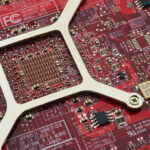Understanding Optical Fiber Additional Covering Systems
Did you know that over 90% of worldwide internet data flow relies on fiber optics? This information underscores the significance of every part in optical fiber cable production, especially the optical fiber secondary coating system. These arrangements are crucial for ensuring the fiber optic cables’ resilience and performance.
This write-up will delve into the complexities of optical fiber secondary coating processes. We will examine their essential function in safeguarding optical fibers. Additionally, we will consider how these setups improve fiber strength and performance. This information is essential for those working in fiber draw tower field and manufacturing.
Guide to Fiber Optic Technology
Fiber optic technology has revolutionized information transfer, using optical signals over electrical ones. This approach ensures rapid data transfer with negligible data degradation. At the heart of this technique lies the principles of optical fiber communications. These basics are reinforced by a sophisticated design. It consists of a core, coating, layer, reinforcing strands, and a defensive layer. Each part is crucial for the system’s effectiveness.
The technique’s adoption into telecommunications has transformed our data exchange system. It effectively handles high data traffic, supporting online, telephony services, and television channels. Thus, fiber technology not only enhances performance but also ensures reliability globally.
Exploring Fiber Secondary Coating Line
A optical fiber secondary coating process is a assembly of dedicated machines and procedures. It coats shielding coats to fiber optics after fabrication. This additional covering is vital for the optical fibers’ strength and operation. It defends them from external and physical dangers. The critical role of layers in upholding fiber resilience is clear.
Meaning and Relevance in Fiber Optic Production
The additional covering procedure is critical in optical fiber production. It involves covering the fiber cores with a plastic coat. This coat shields the optics during deployment and use. It extends the fibers’ lifespan by reducing wear from bending, wearing, and pollutants.
Without these layers, optics would be susceptible to splitting and functional problems. This process is essential for maintaining the fibers’ integrity.
The Role of Coatings in Defending Fiber Strands
Coatings are key in preserving the optical and mechanical performance of fibers. They serve as a barrier against mechanical pressure and environmental factors. The importance of coatings is obvious; they improve the fiber’s resilience. This guarantees easier installation and a extended lifespan.
This emphasis on auxiliary layering is key for those in optical fiber technology. It’s a detail that greatly affects the optical fiber’s functionality and longevity.
Elements of Fiber Secondary Covering Processes
The fiber secondary coating line is a sophisticated arrangement, comprising multiple essential components. These components are vital for manufacturing top-notch products. They aid in understanding how a optical fiber auxiliary system operates and what it requires to function properly.
Key Machinery Overview
Primary tools like fiber spoolers, gel units, extruders, connection points, and cooling units constitute the heart of the secondary covering process. Each machine is essential for the coating process. For illustration, the extruder melts the coating material, and the crosshead covers it evenly around the fiber. These components must work together to provide continuous production and output excellence.
Raw Materials Used in Coating
The selection of raw materials for covering is essential for reaching the desired performance. UV-set plastic materials are frequently chosen for their exceptional defensive traits. These substances protect the optic, increase its longevity, and improve total functionality. The right mix of materials guarantees the end output meets regulatory benchmarks and user needs.
Understanding the Secondary Coating Process
The auxiliary covering operation is essential in the manufacturing of fiber strands, offering essential defense to the freshly manufactured optics. This process includes the coating with defensive layers to enhance the fiber strand’s strength and performance. The timing of this process is critical; it ensures ideal attachment, thus cutting down on waste and enhancing operational effectiveness.
Producers employ multiple layering techniques, including extrusion and gel application, to tailor particular covering characteristics and depths. Each method provides distinct advantages, ideal for various optic uses and needs. As the demand for high-quality fiber optics grows, improving the secondary coating process is crucial. It is critical for meeting regulatory standards and advancing coating technology.
Significance of the Draw Tower in Auxiliary Covering
The fiber draw tower is essential in the manufacturing of fiber optics. It draws fibers from initial shapes while coating with protective substances as they harden. The quality of the drawing system is critical, influencing the coating’s effectiveness.
Functioning of the Draw Tower
The draw tower warms the starting material before drawing the fiber at a managed rate. This operation is essential for upholding the optic’s strength. As the strand appears, coverings are added without delay for consistent shielding against external and physical harm. The layout of the drawing setup ensures ideal covering placement timing and adhesion.
Link Between Drawing System and Layering Effectiveness
The drawing system’s caliber directly impacts the covering’s outcome. Inconsistencies in the fiber pulling procedure can result in inconsistent covering depth, impacting the optic’s functionality. Superior drawing systems remove these issues. A even layering setup boosts mechanical performance, making the FTTH cable production line more durable and functional in multiple settings.
Characteristics of High-Quality Secondary Coatings
High-quality coatings are vital for the effectiveness and dependability of optical fiber networks. They must adhere to rigid structural and optical guidelines to provide data transmission efficiency. This knowledge aids producers in designing more dependable outputs.
Structural and Optical Quality Benchmarks
Additional layers need to exhibit exceptional structural qualities. They must endure physical strain and maintain effectiveness across various environmental conditions. This includes sticking firmly to the optic’s center and preventing contraction or stretching. Additionally, they should enhance visual transparency, ensuring rapid communication with minimal signal loss.
Significance of Bonding and Durability Against Layer Separation
Bonding of the covering to the optic’s nucleus is vital for the network’s durability. Without strong adhesion, the risk of coating detachment increases, potentially causing breakdowns. Superior layers are designed to resist delamination, ensuring durability and stability across different applications. This toughness not only extends the fiber optics’ lifespan but also boosts effectiveness, highlighting the importance of choosing top-notch covering substances.
Technology Behind Secondary Coating Lines
The evolution of secondary layering processes is driven by the demand for effectiveness and superior product quality. In the optical fiber sector, the embracing of advanced covering tools is increasing. These improvements highlight real-time monitoring systems and enhanced extruder designs. Such systems allow manufacturers to maintain high-quality standards while simplifying manufacturing operations.
Improvements in Secondary Layering Machinery
Recent advancements in secondary layering processes have changed manufacturing capabilities. New polymer applicators now deliver exact management over the layering procedure. This leads to better consistency and performance in the final product. Robotization and smart technology integration also allow speedier fabrication operations with less operator involvement. This not only reduces mistakes but also enhances general production.
Analysis of Secondary Layering Methods
Comparing different auxiliary covering systems is vital. Modular systems stand out for their versatility and scalability. They permit manufacturers to adjust to variable fabrication requirements without major system modifications. In contrast, traditional setups are recognized for their consistency and proven effectiveness. The choice of technology depends on a firm’s particular requirements, cost considerations, and fabrication targets.
Advantages of Using Secondary Coating Lines
Secondary coating lines offer many perks to fabricators in the fiber optics market. They boost the manufacturing operation, leading to greater cost efficiency and enhanced item standards.
Financial Savings in Fabrication
Auxiliary covering systems are key to cutting manufacturing expenses. They cut down on wastage and streamline operations, causing significant cost efficiency. This effectiveness enhances financial returns, making it vital for firms seeking to remain ahead.
Improved Product Quality and Durability
Auxiliary covering systems also boost item strength. The durable coatings coated through these processes boost the item strength of fiber optic cables. This means longer lifespan and consistency, providing better functionality and client contentment.
Uses of Auxiliary Covering Systems
Optical fiber auxiliary covering systems are crucial across different sectors, guaranteeing the dependability and performance of fiber optics. These optics are crucial in telecommunications, building the base for fast online connectivity. They enable efficient data transmission, bridging consumers worldwide.
In the medical field, these optics are essential for surgical instruments and testing machines. Their accuracy and resilience are essential for medical applications. The applications of fiber secondary coating also extend to space and defense sectors, where they enhance communication systems and monitoring devices.
Electronics for consumers benefit greatly from the improved strength of these strands. They support devices that operate under harsh conditions. The adaptability of these fibers enables cutting-edge products, making them vital in today’s modern tech landscape.
Impact of Secondary Coating on Fiber Optic Performance
The secondary layering is vital for enhancing optical fiber functionality, concentrating on fiber durability and light distortion. A well-designed coating can greatly reduce small defects in fibers that might lead to breakage under pressure.
How Coatings Affect Tensile Strength
The tensile strength of fiber optics is crucial for their consistency across multiple operations. Auxiliary coverings deliver a defensive cover that absorbs stress, minimizing the chance of fracture. This protective layer provides that strands maintain their fiber durability under external pressures, guaranteeing reliable functionality throughout their lifespan.
Light Distortion Control and Its Significance
Light distortion can distort light propagation within optical fibers, resulting in communication issues. Powerful secondary layers reduce these bending issues, ensuring strands preserve their visual characteristics even in challenging settings. By lowering minor bending issues, producers can ensure fiber optics provide top-notch functionality and durability over time.
Sector Changes and Advancements in Secondary Layering
The fiber optics secondary layering market is witnessing significant shifts, propelled by the demand for enhanced effectiveness and environmental responsibility. This evolution is driven by the fast-paced development of information exchange, raising awareness of the significance of high-quality compounds and modern layering methods. These shifts highlight the importance of embracing cutting-edge materials and techniques in the coating industry.
New Developments in Covering Methods
Progress in layering techniques have resulted in the invention of new plastic substances. These compounds offer exceptional physical qualities and sustainability. Such advancements not only enhance the durability of fiber optics but also minimize environmental harm. Furthermore, advanced fabrication processes provide greater accuracy in placement, causing uniform output standards.
Outlook for Auxiliary Covering Systems
The outlook for auxiliary covering systems is anticipated to include the integration of automation and smart technologies. These advancements are expected to streamline production, thus reducing costs and improving output standards. As the market progresses, the emphasis will stay on innovation and discovery. This will push more advancements targeting satisfying the need for fast information exchange and sustainability.
Hurdles in Secondary Layering
The production of optical fiber coverings experiences various hurdles that affect production efficiency and product quality. A critical problem is the challenge of ensuring uniform covering depth across different optic strands. Such differences can cause layering issues, affecting the fiber strands’ total effectiveness and consistency.
Ensuring proper adhesion between the coating and the fiber is another major hurdle. Insufficient attachment can lead to the coating to fail early, at the time of coating or subsequently. Moreover, contaminants during the coating process pose significant manufacturing hurdles. These pollutants can undermine the coating’s integrity and performance. Manufacturers must handle following rigid green standards with advances in manufacturing to get past these challenges.
Overcoming these challenges is essential to fulfill the rising sector expectations. It prepares the ground for better longevity and reliability in optical fiber uses.
Overview of Secondary Layering Processes
The summary of optical fiber auxiliary covering systems emphasizes their crucial role in producing consistent and high-quality fiber optics. These setups not only improve the physical strength and light transmission of optical fibers but also shield them from environmental threats. This ensures the fiber strands stay durable over their functional period.
Improvements in systems have taken the benefits of Fiber coloring machine to new heights. They boost fabrication effectiveness, reduce excess, and cause higher item excellence. The innovations enable firmer attachment and resistance to issues like delamination, which significantly impacts effectiveness.
Grasping the significance of optical fiber auxiliary covering systems aids stakeholders in the fiber optic sector in making well-informed choices. This knowledge results in better output standards and operational efficiencies. Such developments are vital in today’s competitive market.
FAQ
What does a fiber secondary coating line mean?
A secondary layering process is a arrangement created to add shielding coverings to fiber optics. This operation occurs after drawing, providing the fiber strands’ resilience and effectiveness.
Why is the secondary coating process important in fiber optic manufacturing?
The secondary layering procedure is essential. It shields the glass fibers from mechanical and environmental threats. This increases their lifespan and dependability, while maintaining their optical integrity.
Key elements of an auxiliary covering system?
Essential parts consist of fiber spoolers, gel units, extruders, connection points, and cooling units. These components function seamlessly to coat with defensive layers to fiber strands.
Common substances in auxiliary covering?
Common materials include ultraviolet-hardened acrylic substances. These deliver a defensive cover against damage from bending, abrasion, and contaminants.
Role of the extraction structure in auxiliary covering?
The fiber strand extraction system controls the fibers’ drawing from preforms and coats with protective substances as they harden. This substantially affects the layering standard.
Physical strength and light transmission guidelines for auxiliary coverings?
Auxiliary coverings must adhere well to the glass core, resist delamination, and resist physical strain. This boosts the optic resilience and light transmission of the fiber optic cables.
Innovative techniques in auxiliary covering systems?
Emerging technologies consist of cutting-edge coating machines and live tracking for ensuring standards. These advancements boost layering functionality and manufacturing productivity.
Perks of secondary layering processes for fabricators?
Auxiliary covering systems lead to financial savings in fabrication, improved product quality, reduced material waste, and greater strength and functionality of fiber optics.
Uses of secondary layering processes in different fields?
These systems are employed in communication networks, healthcare, space exploration, and electronic gadgets. They ensure durable optics for fast online connectivity and information hubs.
Effect of auxiliary coverings on fiber durability?
Secondary coatings shield small defects and reduce light distortion. This ensures the fibers retain their optical characteristics and operate steadily under different environments.
Obstacles in auxiliary covering production?
Fabricators face challenges like maintaining coating thickness consistency, achieving strong bonding, stopping impurities, and following green regulations while pursuing innovation.
Future advancements in secondary layering sector?
The market is projected to experience more robotics, advanced system combination, and progress in plastic compounds. These should boost green practices and covering efficiency.



